Careers in the Sport Industry
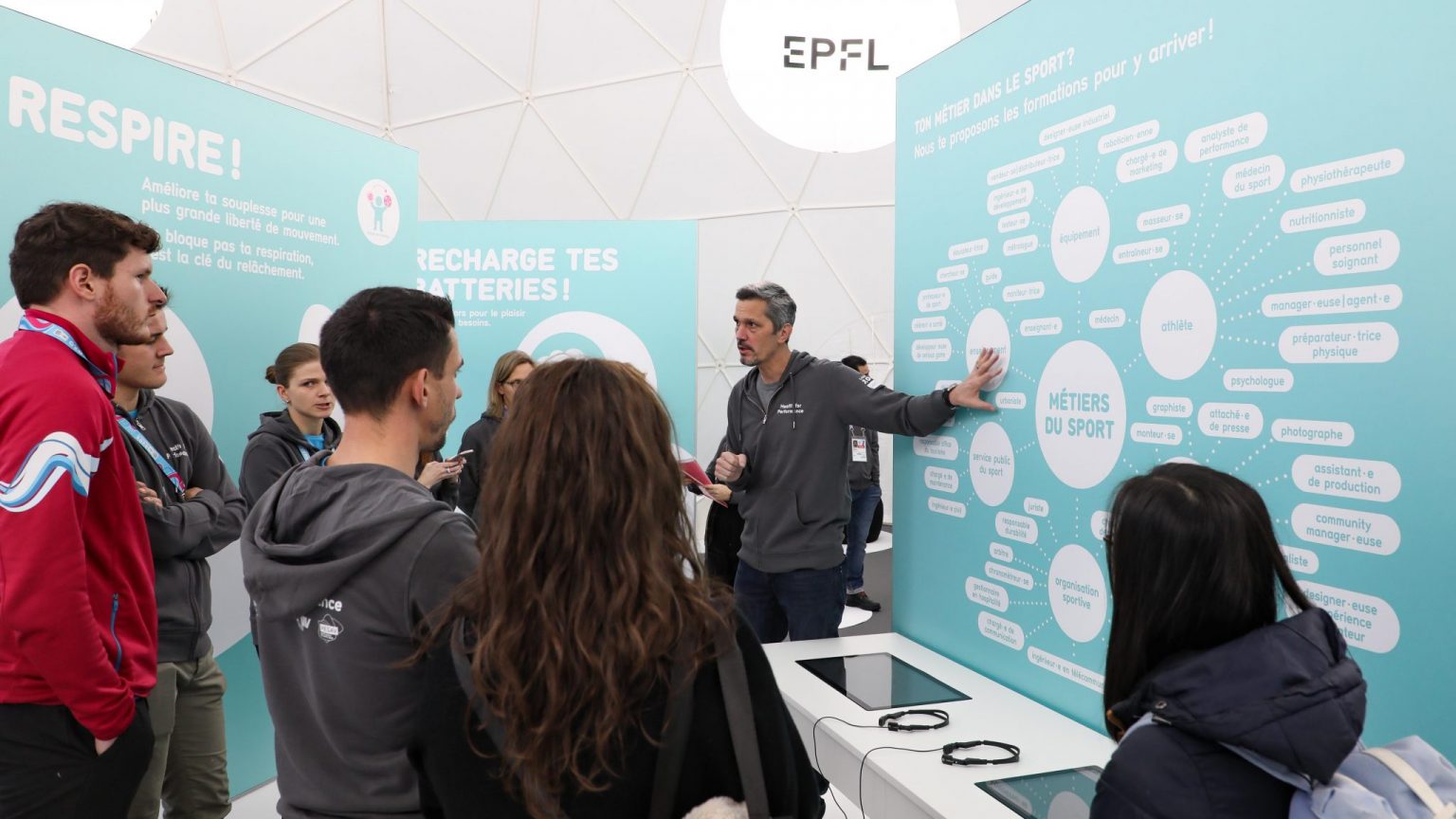
Health for Performance – Lausanne 2020 Youth Olympic Games
Sport offers many career opportunities for EPFL graduates. The evolution of equipment, the ever-increasing integration of technologies for training, performance monitoring or content distribution requires the use of experts from our School’s training programs. These new avenues are growing rapidly.
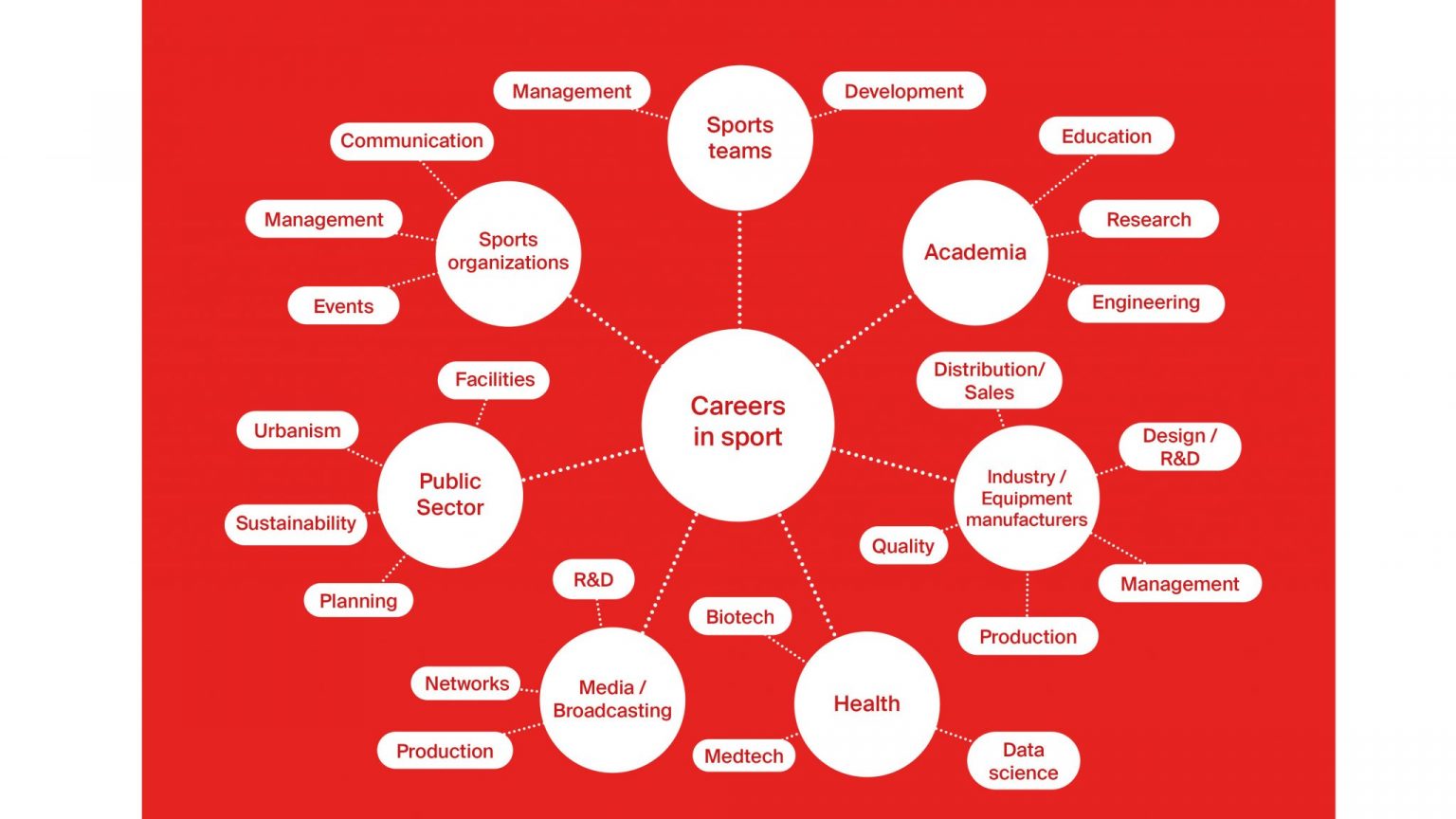
Career opportunities within the sport industy for EPFL students
Testimonials
2023
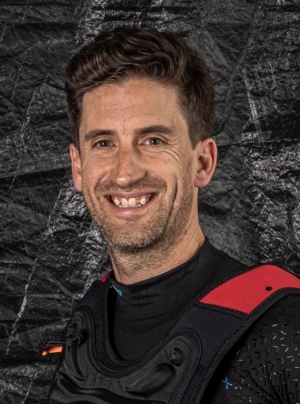
Jérôme Clerc (AR’08) Director and Skipper Realteam SA Co-Founder Léman Hope
What is your background in professional sports?
I made the transition during my studies. In parallel with my studies at EPFL, I was very involved as a sailor at the Centre d’Entraînement à la Régate (CER) in Geneva. I gradually took on more responsibility and took over the administration of the center after graduating. After that, things followed on quite naturally. Through this structure, I had the opportunity to lead several sports team projects with a group of enthusiasts. We were lucky enough to set up a team to take part in the D35 championship, with some pretty crazy results, since we won the major Lake Geneva events, such as the Bol d’Or and the Geneva Rolle, and went on to win the series championship.
It was in this context that I had my first discussions with our main partner. After 4 years at CER, we created a new project to set up a professional team to sail in international championships on the most cutting-edge boats available. Our aim was to give young sailors the chance to cut their teeth and enter the world of professional sailing. We set up the Realteam structure, which is celebrating its 10th anniversary, and have carried out projects on Extreme 40s, Flying Phantoms and GC32s. Our experience with racing multihulls and hydrofoils has enabled us to play a part in the design of the new TF35 series of flying multihulls from Lake Geneva, on which we are currently racing.
Since 2020, to share our passion for sailing on Lake Geneva, we have also founded an association, Léman Hope, which supports young people in remission from cancer by offering them a confidence boost through sailing and competition.
How have your studies at EPFL helped you in your career?
Apart from sailing, my work is quite varied, involving administration, finance and project management. Although there’s no direct link with my architectural studies at EPFL, I’d say that I’ve learned a lot that I’ve been able to put to good use.
The first thing that comes to mind is critical thinking, the ability to analyze a project in depth, identify priorities and the resources needed to bring it to fruition. I also think that at EPFL we also learn very quickly to manage our time and find ways to focus on the things that are most important to the success of our studies. This is especially true in my case, where I’ve continued to race while studying. This ability to prioritize actions is very useful in the projects I carry out today. And finally, the ability to argue. Architectural renderings are great opportunities to learn how to defend a project.
What’s your fondest memory of EPFL?
I’d say it’s my first architectural review. In fact, it’s the first project you’ve ever worked on in its entirety. You’re no longer in the position of a learner repeating what he’s been taught, but in that of an entrepreneur who has created something and is going to defend it. It’s one of the first times you take such ownership of your project. Faced with a panel of renowned experts, you have to argue, defend the meaning of your choices, convince. It’s not easy, but in the end, it gives you confidence in your abilities. And since then, it’s been at the heart of my profession.
If you had one piece of advice for young students, what would it be?
I think you should take advantage of your studies to develop your passion. Choosing the right field is essential. Studying is a way of building up knowledge in a field you love and feeding your passion. It’s great when you can make a career out of it in the end.
What links do you think you can build with EPFL in your current position?
In fact, over the last few years I’ve been keen to add even more value to the projects I lead. I asked myself how I could make the society benefit from the expertise we’ve built up over the last ten years. Léman Hope is a way of sharing our passion. I think we also have a card to play in bringing our expertise in flying boats to the field of soft mobility. EPFL has been working for many years on projects involving motorized foil boats. I think there are great synergies to be found between our expertise in operating complex boats and the development projects carried out by students and research laboratories.
Recently, I approached the EPFL to look at possible collaborations, and I’m thrilled to see all the opportunities that exist. I think we have a real chance to develop projects that contribute to building knowledge in this fast-developing field, offer job prospects for young graduates and contribute to the region’s international reputation.
What kind of experience are you looking for in these exchanges?
We have extensive operational experience on flying boats. We can bring know-how for operation and optimization. We still need scientific expertise and engineering skills in fields such as materials, fluid mechanics, propulsion, energy chain development, and the choice and management of energy sources. All this expertise is available at EPFL, and there are already students working on these subjects.
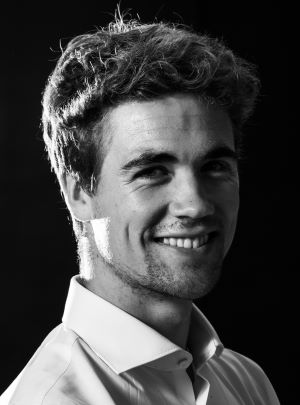
Adrien Peltier (GM’22) Fiber Optic engineer at Alinghi RedBull Racing
What made you want to be part of a competitive sports team?
I was at a point in my studies where I wanted to do something with my hands, and during the 2 years preceding my investment in the association, I saw this foil boat (bifoiler from hydrocontest EPFL) flying in a stable and graceful manner when he should have fallen. I think it’s the desire to get involved combined with an admiration for the technique developed by the team. I believe that competition is a great engine for pushing ideas to the limit, and a way to validate them.
Is this a wish that you already had when starting your engineering studies?
I didn’t want to compete, but I wanted to face challenges. Mechanical competition is ultimately just a way of creating problems while being able to test the solutions.
How have you used your years on campus to best train yourself for this type of challenge?
I kept an eye on the different disciplines in my field (GM), to have an overall vision of a system, to avoid specializing in one area and closing myself off to others.
What were the particularly notable projects during your studies?
Nothing I have done during my studies comes close to what I experienced while being part of this SSB (Swiss Solar Boat) team in terms of diversity. The large amount of technical learning by discussing with colleagues to find the solution that suits everyone, managing different ways of working and levels of involvement, time management, these are learnings that leave traces, sometimes learned the tough way but leave strong memories.
Do you have an anecdote, a story that particularly struck you?
I think I always quote the same anecdote, but in my opinion it summarizes everything. It was our first competition, in the final of the 1V1 game which is played over 3 races. We had made a good impression in all the previous races, we were against the team to beat (multiple winner) and at the end of the first race, a too powerful reverse maneuver broke an important element of the boat. The first reaction is that the whole team focuses on the damage. At the same time we had turns that we would have liked to improve and to take tighter. At this time, a reminder is issued on this point and the team organizes itself around these 2 objectives. The part was repaired just in time with the means at hand, and a path was found to improve the maneuver. It wasn’t enough for us to win, but seeing this team working in parallel under pressure is an intense memory.
What learnings have been most useful to you for your transition into professional life?
I am still active in the naval environment so I use a lot of technical knowledge developed in my field, but also in others such as electronics. It allows me to better understand the point of view of these people now, and to a lesser extent to apply it myself. And obviously, a way of working as a team, of listening and communicating which is evident today.
What would be your advice for a student who would like to follow your path?
That you have to trust yourself. Passion and desire are incredible driving forces and if they are there, you have to follow them, cautiously at first, then, if it works, you will dive into it. Then, one other point that applies everywhere, but we tend to forget it: to express ourselves when something is not working and to express ourselves when something is working well. “Positive feedback goes a long way”
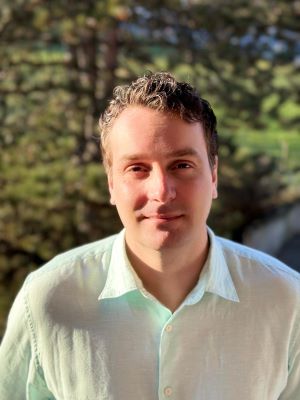
Jérôme Thévenot, MedTech Startup Founder
On what research is the development of your startup based?
The development of our startup originated from the postdoctoral research I was doing on musculoskeletal disorders. I worked as a researcher for the University of Oulu (Finland), with strong collaborations with hospitals for clinical testing and veterinary centers for animal experimentation. Based on scientific findings and discussions with orthopedic surgeons, we found an unmet need that we wanted to fulfill with Sensemodi. We performed pilot testing and preliminary validation of our approach with patients in Finland until 2019 when we decided to participate in MassChallenge Switzerland, a startup accelerator in Lausanne. During this period, we got more familiar with the entrepreneurial environment and contacted the startup ecosystem of EPFL, which we envisioned as an excellent opportunity to continue our journey.
What motivated you to venture into entrepreneurship?
As a researcher in biomedicine, I often felt that the technological developments and findings reported in the literature were underexploited in clinical practices. I wanted to make a change and create something that could be used to help both the practitioners and the patients. While I have always enjoyed research and writing articles with discoveries, creating a product with concrete applications based on these studies is very rewarding.
What are your current connections with EPFL (École Polytechnique Fédérale de Lausanne)?
In 2020, thanks to an EPFL Innogrant and the support of Prof. Kamiar Aminian, we were grateful to join the Laboratory of Movement Measurement and Analysis (LMAM). This opportunity helped us go through the COVID period, which took a toll on our clinical experiments. Following this stay in LMAM, we joined the Embedded System Laboratory (ESL) – under the supervision of Prof. David Atienza – and were granted an Innosuisse Innovation Project in 2022 as a collaboration between ESL and the Schulthess Klinik in Zürich. During this project, we submitted a new patent and improved our hardware, which is currently being tested in the clinic with 120 patients. Besides this project focusing on knee conditions, our hardware is being tested for other medical applications unrelated to musculoskeletal disorders, expanding the possibilities of usage of our platform.
What skills did you acquire at EPFL that have been most useful in starting your business?
Joining EPFL helped the development of some aspects of the technology, especially the embedded electronic part, a specialty of the ESL. Furthermore, access to the EPFL startup ecosystem granted us contact with key players in the field, which supported the discussion and collaboration with different institutes.
How do you envision your relationship with the school in the future?
As we have multiple ongoing projects that are using the Sensemodi platform, we are planning to continue our collaborations to move forward with them. We are also planning joint funding applications between Sensemodi and ESL to develop further and test the analytical part of our solution and use it in different fields.
In what ways does the region’s ecosystem assist you in developing your project?
The region has been helping us to develop our business model and provided us with mentoring to support our startup. For instance, we have been part of the Vanguard accelerator program in partnership with Biopôle, and we have attended multiple mentoring sessions organized by Venturelab to guide us along the different parts of entrepreneurship. We also participated in events organized by EPFL, such as Startup Day, Engineering Day, and Health Days, which granted us access to a relevant target audience.
What advice would you give to a student looking to start their own business?
First, to get familiar with the startup ecosystem and participate in the events organized by EPFL and the region. A key factor is to talk to other entrepreneurs and understand the necessary personal commitments to start a business. Finally, to ensure that there is an actual need for the product/service to be sold, as not all great ideas can lead to great businesses without customers.
2022
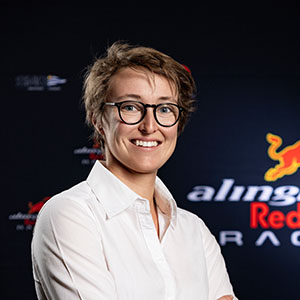
Aurore Kerr (GM’20) Structural engineer at Alinghi Red Bull Racing
What is your current position?
I am currently a structural engineer at Alinghi Red Bull Racing, Challenger of the 37th America’s Cup.
Being part of such a team is a bit of a dream come true, was it a goal during your studies?
Working for the America’s Cup is indeed one of the grails of naval engineering as these boats are a condensation of technology. As a student with a passion for sailing, I dreamed of it, but at first it seemed unattainable. Beyond skills, you have to be able to meet the right people at the right time and know how to seize opportunities when they arise. However, the time of studying allows you to put a maximum of chances on your side.
How did you use your years of study to get to this position?
The choice of the EPFL was not an insignificant one in my curriculum. EPFL had been involved in the previous Alinghi campaigns, in the Hydroptère project and offered students the possibility to participate in the Hydrocontest, an international competition focused on maritime energy efficiency. So there were already strong links with the naval world. As soon as I arrived at EPFL as a Bachelor student, I joined the Hydrocontest EPFL Team and stayed there until my Master’s internship. This involvement in a more applied project than the lectures was extremely formative: you meet students and professors interested in the same subject, you learn to manage a project from A to Z, you can put into practice what you have learned in theory and you follow its development over several years, with its ups and downs. It was during these years that I met the co-founders of SP80, a project to break the world sailing speed record. This second adventure, of a larger scale, was an excellent opportunity to continue to professionalize myself at the end of my studies.
What is your best memory at EPFL?
I have a lot of good memories at EPFL, be it during victories with the Hydrocontest EPFL Team, during sleepless nights with SP80 to finish a project or during evenings at Satellite to review the world of sailing over a beer!
If you had one piece of advice for young students, what would it be?
To get as involved as possible in an interdisciplinary project that you are passionate about. It’s the best way to develop personally, meet new people and learn new skills. These projects allow you to combine work, relaxation and passion while training for the future and the working world.
How do you see the future of your professional career?
I’ve always found it hard to project… So for the moment I’m not asking myself too many questions and I’m trying to enjoy every moment of this wonderful adventure with Alinghi Red Bull Racing.
Interview date: October 2022
2021
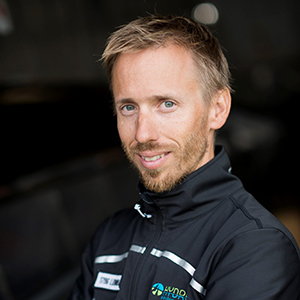
Daniel Schmäh (MX’05) Product Development Engineer at Nidecker Group
What is your current position?
I am currently a product development engineer within the Nidecker Group. I am responsible for several innovative projects with long term developments on products related to snowboarding and also actively participate in other future technical projects of the group
What is your background?
I started my professional career in a start-up company at EPFL which aimed to develop production processes for technical composites for the automotive industry. It was a great learning experience but it is a field where developments take a lot of time. Passionate about sports and sailing in particular, I jumped two years later on the opportunity to join the design office of l’Hydroptère (which later became Hydros) when it opened at the EPFL Innovation Park. This experience was very enriching, with super fast development loops and at the cutting edge of composite technology. Hydros was an incredible and truly formative experience, to be able to manage developments from concept, to 3D drawing, to production follow-up and finally to do-it-yourself water testing. 5 years ago, with the departure of the Hydros office in Dubai, I joined the Nidecker group, mainly active in the snowboard world, which allows me to stay in one of my passions and gain experience on the business side of product development.
How has EPFL prepared you for your career?
The materials science program I followed at the time allowed me to acquire a technical background with a very good general knowledge of the different existing materials, their properties, and their different processes of implementation. This training, as well as the EPFL in a more general way, also gave me the necessary tools and structure to take up and lead technical projects from their implementation to their success.
What product would you dream of developing?
I dream of one day developing a leisure product that has absolutely no ecological impact from its manufacture to its disposal…
Your greatest professional achievement in the sports sector?
The world sailing speed record that we beat with the hydrofoil in 2009, the result of the work of a great family of enthusiasts and achieved on a boat optimized by our internal R&D team.
Interview date: March 2021
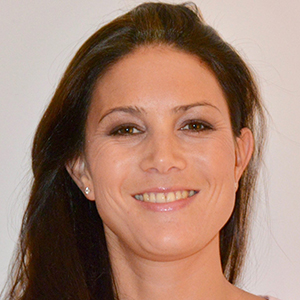
Lise Van Long (CGC’00) Corporate Sustainability Senior Manager at IOC
What are your current activities?
I work in the sustainability team of the International Olympic Committee (IOC) as a Senior Manager. Having joined the IOC in 2016, I contributed to the development of the organization’s first sustainability strategy, which aimed to strengthen the IOC’s level of ambition in sustainability. Together with my other colleagues, I am now working on the implementation of this strategy at the level of the institution itself, the Olympic Games and the Olympic Movement – which includes international sports federations and National Olympic Committees. On a day-to-day basis, this involves managing a multitude of projects such as the climate plan, the responsible purchasing policy and exchanges with suppliers on this subject, studies on sustainable innovation topics, the development of methodological guides for our stakeholders, etc. And in recent years, I have been fortunate enough to contribute to the exciting project of building our new headquarters according to very high sustainability standards.
What is your background?
I trained as a chemical engineer at the EPFL (currently Master in Chemical Engineering). Being passionate about ecological issues, I specialized in environmental chemistry in my last year, then I followed a Master’s course in Environmental Management at MinesParisTech. I worked for 15 years in environmental consulting, in Paris and London, first in a large engineering company (AECOM), then in a small consulting firm (Bio Intelligence Service) and finally at Deloitte. In 2015, I came back to Switzerland with the intention of discovering something else, and I had the opportunity to join the CIO in a young team.
How has EPFL prepared you for your career?
My studies at EPFL gave me many tools and know-how to tackle complex problems, whether scientific or other. Chemistry being present everywhere, my core curriculum proved to be useful in many situations and even today when it comes to calculating carbon balances. On a human level, having studied in an international environment such as the EPFL has been a major asset for the rest of my career, widening the field of possibilities.
Sport, for you, is…
First of all a great source of inspiration! I am convinced that the values conveyed by sport and the physical and mental benefits of sport can contribute to a better world. And when it comes to sustainability, there is still a lot to be done in this area, so it’s exciting.
What are your current collaborations with EPFL?
Following various ad hoc collaborations (notably with the Faculty of Architecture for the construction of our new headquarters), the IOC and EPFL signed a Memorandum of Understanding in 2019 to facilitate collaboration on various innovation topics related to sport and sustainability. For example, we worked with the Smart Living Lab (Prof. Fivet) and the EAST laboratory (Prof. Fröhlich) of the Faculty of Architecture to create a think tank that promotes sustainable innovation in the field of sports infrastructure, while the LEPA laboratory (Prof. Girault) advised us on the installation of a hydrogen station for our fleet of vehicles.
LinkedIn
Interview date: March 2021

Bertrand Cardis (GM’81) Administrator Decision SA – Founder Niveole SARL
What are your current activities?
After 30 years of activity as Director of Decision SA where I worked for sport, I offer myself free time to do more sport and in particular cycling. At the same time, I have created a consulting firm, Niveole SARL, which allows me to make the most of the experience I have acquired over the years in a punctual and not very time-consuming way. I am also still active in several boards of directors.
What is your background?
I obtained a degree in mechanical engineering in hydraulics from EPFL in 1981. During my studies, I participated in particular with my fellow student Franck Riboud in a semester project for the development of a windsurf board. We imagined it, digitally simulated it, built a model, carried out tests in a tank test, and finally realized a prototype to validate the hypotheses by sailing on it. This project allowed us to work across silos of the different sections, which was not usual at the time. At our scale, it was a first interdisciplinary project and I am happy to see that the EPFL now offers this opportunity to students thanks to the MAKE projects.
How has EPFL prepared you for your career?
I have always been passionate about sailing and very active in competition. After graduating, I entered the round-the-world race on the Golden Disc 3. 135 days of competition at sea. On my return, we decided with the members of the Swiss Ocean Racing Club to create Decision SA to build the boat UBS Switzerland for this competition. At the time, I thought I would spend 2 to 3 years in this activity and resume my job as a hydrodynamic engineer. The future proved me wrong, my passion for sailing and competition became my job and I made all my career in this company.
If I hadn’t done the EPFL I would never have succeeded in this career. This school allows you to have a global and holistic vision, the skills you acquire there allow you to apprehend a problem in its entirety.
What is your greatest professional sports memory?
As a child, I dreamed of building boats. I participated in the making of the first two when I was 16 years old; they were Optimists that I made for my two sisters. But even in my wildest dreams, I never dared to imagine building a boat for the America’s Cup. So building several of them and contributing two times to the Alinghi team’s victory really allowed me to fulfill my wildest dreams.
Interview date: March 2021
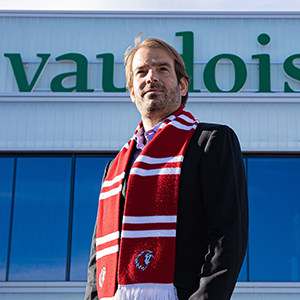
Alexandre Aellig (SC’06) Chief Operating Officer at Lausanne Hockey Club
What are your current activities?
I advised the new shareholders of the Lausanne Hockey Club in the discussions that led to the takeover of the club in May 2020. My activities are essentially focused on the management and reorganization of the group in order to be ready post-Covid to hosts events within the Vaudoise Arena – hopefully soon.
What is your background?
I started my professional career while studying at EPFL, working for a start-up active in mobile networks. I then did my Master’s degree thesis at UBS, which convinced me to continue in the financial field in a family office in Geneva, as a hedge fund analyst, where I worked for almost eight years in investment management. Subsequently, my advisory activities with clients in Europe and the Middle East, particularly in sports and technology transactions, enabled me to return to my early studies.
What caused you to make the switch from the financial world to sports?
Finance, especially private equity, covers a very broad field of activities, so this shift happened quite naturally over the last few years, even if this is the first time that I am directly involved in the sports sector on a day-to-day basis. The fact that I took part in the club’s takeover transaction obviously precipitated it.
How has EPFL prepared you for your career?
Having followed classical studies, EPFL gave me the chance to consider engineering without necessarily having had a preliminary scientific education. In addition to the mathematical background, the studies I followed in Communications Systems allowed me to acquire a scientific rigor and a logic that were useful throughout my career. My knowledge acquired at the EPFL is proving to be particularly valuable at the moment, as we begin a digital transition within the LHC.
What are your current collaborations with EPFL?
The LHC has several concrete projects in collaboration with EPFL and startups linked to the school, especially in the sports field (player and puck tracking solutions, physical training and recovery for example).
Interview date: March 2021
2020, Nov. Lausanne HC. “Comment le LHC s’adapte à sa nouvelle dimension” FR
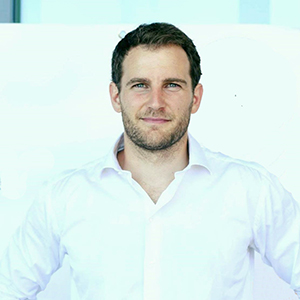
Mathieu Falbriard (PhD EL’20, SC’15) Sports tech startup Founder
What are your current activities?
I am currently working on a startup project to improve the management of cranial impacts in sport. Our goal is to integrate motion analysis technologies, developed at EPFL, into connected helmets and thus prevent consequences associated with repeated head impacts.
What is your background?
I started my career in a somewhat atypical way with a CFC in computer science at the Technical Division of Porrentruy, then Bachelor and Master studies in communication systems at the EPFL, with one experience in Iowa State University (USA). I realized my diploma project with a startup from EPFL (GaitUp) which was followed by a PhD at the Laboratory of Movement Measurement and Analysis (LMAM), supervised by Prof. Kamiar Aminian, and finished in May 2020. During my PhD, I had the chance to participate in various interdisciplinary projects, including the development of a foot prosthesis for the ICRC.
How has EPFL prepared you for your career?
The knowledge and experience acquired during my EPFL curriculum on cutting-edge technologies, notably in computer science, communication systems, and signal processing, allow me today to undertake a startup project encompassing all of these fields; using interconnected sensors, with wireless communication, interpreting the measured data using state-of-the-art algorithms to make them accessible to the general public, while saving sensitive data on secure servers. In addition, EPFL allows to keep a balance between studies and related activities; a necessity and a real asset in my opinion. Thus, through various commitments, I have been able to acquire knowledge in the management of an associative structure which serves me today in my entrepreneurial project.
Why start a startup in the field of sports?
Sport concerns all of us, no matter the level of practice. It is an important public health issue, both in terms of the benefits to our physical and mental health, but also in terms of the trauma that can result from it. Having practiced contact sports for several years, I was confronted with the problem of concussions and their consequences on the daily life of young athletes. Unfortunately, the consequences associated with head injuries are still poorly understood and the lack of instrumentation to monitor head impacts is a major obstacle to improving scientific knowledge. This is why I decided to launch a startup using the technologies and algorithms developed during my PhD and thus propose a solution to the management of concussions in sport. Finally, sports applications, because of their accessibility, often constitute a first phase of improvement for methods that can then be adapted to other fields of use.
What are your current collaborations with EPFL?
Our project has been awarded a grant from EPFL so that we can further develop the measurement system and evaluate the various opportunities for our technology. Thanks to this support, we not only have access to the infrastructure and know-how of the host laboratory (LMAM), but also to a whole ecosystem of knowledge made available to startups by EPFL. In addition, the efforts to promote innovation in the field of sports and the network of partners developed in recent years by EPFL, facilitate the influence of our project and the establishment of collaborations.
Interview date: March 2021
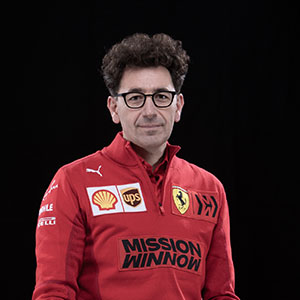
Mattia Binotto (GM’94) Managing Director Gestione Sportiva and Team Principal Scuderia Ferrari Mission Winnow
What are your current activities?
Since January 2019 I am Team Principal and Managing Director of Scuderia Ferrari. I moved to Italy after achieving my degree at the EPFL and I’ve been based nearby Reggio Emilia ever since.
What is your background?
I obtained my bachelor’s degree in mechanical engineering at the École Polytechnique Fédérale de Lausanne in 1994, as I was living in Switzerland at the time. I then attended a Masters in motor vehicle engineering for nine months at the University of Modena and Reggio Emilia. Through that Master I got the opportunity to join Ferrari in 1995, which was a dream come true. I was immediately assigned to the Formula 1 department, as a Test Engine Engineer with the test team and I remember Jean Alesi and Gerhard Berger were driving for the Scuderia at the time. I have been working at Ferrari ever since, fulfilling subsequently the role of Engine Engineer with the race team with Eddie Irvine first and then Michael Schumacher until 2004, when I assumed the responsibility of all race engines and subsequently, in 2007, took on the role of Chief Engine Engineer, race and assembly. Then, in 2009, I was Head of Engine and KERS Operations, before becoming Deputy Director, Engine and Electronics in October 2013 and subsequently Chief Operating Officer, Power Unit. On July 27, 2016, I was appointed Chief Technical Officer of Scuderia Ferrari and finally, from January 7, 2019 I became Managing Director Gestione Sportiva and Team Principal Scuderia Ferrari Mission Winnow.
How has EPFL prepared you for your career?
I have extremely good memories of my time at EPFL and when I think back to those days it’s always with great pleasure. The École has given me solid technical knowledge also achieved and improved through valuable practical training in a number of laboratories focused on several disciplines, which made for a very quick and smooth integration into my first job and no, without a doubt, I have benefitted from it throughout my whole career. I was born and raised in Switzerland and went to Swiss schools, which I believe taught me a pretty much structured approach, in terms of time planning and planning tout court. Finally, apart from all this, I have to say the EPFL was the place where I also made a lot of good friends, some of whom I am still in contact with after more than 20 years!
What is the future of Formula 1?
Formula1 is an incredible sport with millions of passionate fans around the world. It’s the pinnacle of motorsport thanks to its cutting edge technology and there are a very few sports that can give you as much excitement. Over the last few years, the current rights holder of Formula1, Liberty Media, has put in place an ambitious sustainability plan to have a net-zero carbon footprint by 2030, so the clear objective of the sport is to become carbon neutral by that date. Liberty has also set about ways to make the sport more equitable and competitive. Last Summer, all the 10 teams signed the renewal of what is known as the ‘Concorde Agreement’, which is a very good sign, showing that we are all willing to really look positively at ensuring the future of F1. I believe the groundwork has been done and now it’s really a matter of making F1 even more spectacular, stronger, and it needs all of us to work together. A budget cap on chassis performance spending has been implemented for this year and beyond, to help make our sport more affordable; the goal is to contain expenses in the hope of reducing the gap between the top teams and the others. Cars are undergoing a major technical change for 2022, which means they will be simpler and could potentially race more easily against each other. The combination of these two elements, budget cap and technical change, will result in more battles, more teams winning and will bring more excitement. I see a healthy and viable future for Formula 1 and I believe the whole sport is now well set up to achieve its stated long-term objectives.
What are your current collaborations with EPFL?
Unfortunately, today we have nothing in place, even though we have been in contact a few times in the past. I must say though, we always pay special attention to EPFL’s activities and hopefully in the future we will find room for some form of cooperation.
Interview date: April 2021
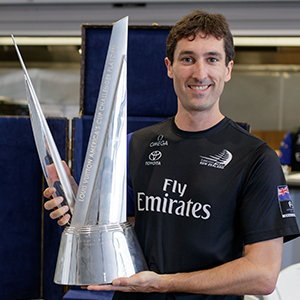
Davy Moyon, Senior Performance Engineer at Luna Rossa Challenge
What was your role during the last America’s Cup?
I had a fairly transverse role within the Luna Rossa team. I was involved in the development of the simulator as well as in the Mechatronics group, which deals with all the electrical, hydraulic and automation aspects of the onboard systems. Within this group I was in charge of the control logic, the commissioning and the optimization.
What is your background?
I studied at the Ecole Polytechnique and the Ecole des Ponts in Paris. This curriculum in mechanical and material science was intended more for energy and transport industry than for high-tech ultralight composite sailboats. But I seized an opportunity and joined the EPFL to carry out my master’s project on the optimization of the foils of the Hydroptère. After that I joined the design team of l’Hydroptère which was being formed at the Innovation Park. In 2012 I was contacted to join the design team of Luna Rossa to help them in the optimization of the foils of their AC72. During the following Cup I was in charge of the development of a simulator at Luna Rossa before joining Emirates Team New Zealand during the campaign.
What attracted you to come and do part of your training at EPFL?
A friend who was doing his last year of master’s at EPFL told me about the school and the partnership that was being set up with l’Hydroptère. As a big sailing fan myself, I saw the opportunity to combine my studies with my passion. It was very tempting, in addition to the high reputation of the EPFL, having the possibility of working on a concrete project in connection with the research laboratories was very motivating. I got in touch with Professor Deville, who was managing one of the laboratories involved in the Hydroptère project, and we were able to define a master’s project that I could join.
What were the highlights of your time at EPFL?
At EPFL, I discovered a pragmatic teaching with many projects and partnerships with companies. Thanks to these collaborations and with the other students in the laboratory, I was able to go from theoretical knowledge in fluid mechanics to the answer to very concrete problems: is foil A better than foil B. Making this link between theoretical training and practical application was very enriching.
I was also impressed by the facilities available to the students for the projects. The permeability between the courses and the research labs, allowing us to have access to professors and PhD students outside the classroom and offering the possibility to use research material already during our studies, is a real educational asset.
What is your best professional memory in sport?
It is difficult to choose between two memories: the speed record with l’Hydroptère in 2009 and the victory in the America’s Cup in 2017. The first one because it is the first great success of this project after many years. The second one because it is the most important event in the field of sailboat design competition.
How do you see the continuation of your professional career?
Most probably again on a campaign for the next America’s Cup. And I also hope to participate in the transfer of the know-how developed on the America’s Cup to the maritime domain, whether it be in the design of foils or onboard systems, and why not make a link to a new generation of students and create new vocations.
Interview date: June 2021
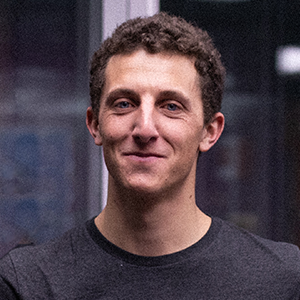
Mayeul Van den Broek (GM’18) Co-Founder of SP80
What is your current position?
In October 2019, I co-founded the company SP80 whose first goal is to break the world sailing speed record with an innovative boat powered by a kite. We are a team of about forty people with various statutes: passionate volunteers, employees of the company or students of the EPFL. My role within the team is to manage the development of the project, our strategy, our communication as well as the search for sponsors to reach our goals.
What attracted you to study at EPFL?
Having spent my childhood in Brittany, a region of France very much oriented towards the sea, I am passionate about sailing and water sports. In 2013, it was these passions that led me to enter EPFL in mechanical engineering. Indeed, in the years preceding my entrance to EPFL, I had dreamed of the world sailing speed record of l’Hydroptère, the victory of Alinghi in the America’s Cup or the Vendée Globe project of Bernard Stamm. All these projects had a common denominator, the technical development in collaboration with the EPFL. That’s how I discovered the school and that’s how I set myself the goal of getting into it so that I could then work on important projects in the world of sailing.
What is your background?
During my studies at EPFL, I had the opportunity to participate in various projects. I spent 6 months in Bangladesh to develop jute fiber-based composite materials, did my Master’s thesis in Japan on the development of floating solar power plant and I also participated in the Hydrocontest: a student competition where our goal was to build the fastest and most energy efficient 3m long radio-controlled boat.
I obtained my Master’s degree in mechanics in 2018. Then, in parallel to an internship to develop composite solutions at Bobst SA, I dedicated my year 2019 to several ocean crossings on the Atlantic and Pacific but also and especially to the launch with 2 other EPFL engineers of my sailing speed record project, SP80. At the end of 2019, we were able to establish an academic partnership with EPFL, then with a first sponsor P&TS, which allowed us to set up the project in a professional way and to finance a test campaign with a 1/2 scale prototype. Between 2020 and mid 2021, I then divided my time between a job as a scientific collaborator in the LPAC (laboratory for Processing of Advanced Composite) at EPFL and the management and development of SP80. Finally, since January 2021, with the arrival of the watch brand Richard Mille as title sponsor in the SP80 adventure, I can dedicate all my time to SP80 and to our world record sailing project.
How did EPFL prepare you for your career?
In addition to the important technical foundations, I think the main skill that my education at EPFL gave me is “learning to learn”. In my current job, I don’t really do a lot of activities related to my training as a mechanical engineer and I do a lot of things that I didn’t learn during my studies. You have to keep discovering, researching, innovating and doing the best you can. I think that my training at EPFL really helped me to develop this ability to look for solutions by myself, to ask the right questions, to go and find the information and to assemble it correctly to solve unknown situations. For me, this is really essential to evolve in the professional world and specially to set up a project like SP80.
What is your current project and how have the learnings and experiences you had at EPFL prepared you?
With the SP80 team, our current goal is to design and build a kite-powered boat capable of breaking the world sailing speed record. We want to reach 150km/h on wind power alone. This has never been done before, we have to innovate, everything is to be discovered and it is this challenge that drives the team and makes us move forward.
A triggering element during my studies at EPFL that pushed me with Xavier Lepercq and Benoit Gaudiot to launch us in the SP80 adventure is without a doubt the Hydrocontest. For this student competition, we had designed from a blank sheet of paper a small radio-controlled foil boat of 3m length. We had everything to do, from the first sketches to the fine tuning on the water. It was a real learning experience! On top of that, during this project, our supervisor, Robin Amacher, was a former member of the engineering team of l’Hydroptère, the record boat that made me dream and that pushed me to come and study at EPFL. Seeing this dream so close and working on a concrete project like the Hydrocontest really gave me the motivation, the passion and some skills to launch our own record project: SP80.
What would you like to pass on to EPFL students?
Today, with the partnership between EPFL and SP80, more than half of our team is made up of EPFL students. It’s great and we’re constantly transmitting!
Our objective with the other engineers of the team is really to transfer to the students, the good practices and skills that we learned by ourselves in the world of work or entrepreneurship after our studies at EPFL. It is of course at our scale but I think that if we manage to transmit these skills and our passion for our profession, we will be able to help the students to prepare themselves better to manage projects in companies, to undertake or to innovate.
Interview date: July 2021
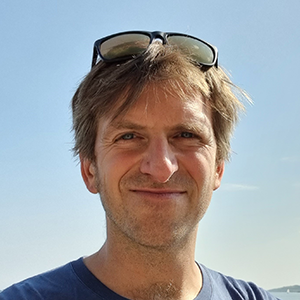
Antoine Sigg (MX’05) Fiber Optic Manager at New York Yacht Club American Magic
What is your current position?
I just returned from New Zealand, the last step of the campaign with the American team competing for the America’s Cup, where I was in charge of the fiber optic system. I managed and made for them all the stress measurements during navigation on the sensitive parts of the boat (hundreds of fiber optic sensors have been installed to monitor the keys and sensitives parts). This also included designing the solutions with input from my engineering colleagues, installing them on the various components before mechanically testing them and monitoring their behavior during sailing. A role that mixed design and engineering work, with much more practical, hands-on tasks.
What is your background?
I was bitten by the sailing bug quite early on. When I had to choose a path for my studies, I looked for the field that would bring me the closest to the technologies applied to the world of competitive sailing, and materials engineering seemed to me to be ideal for that.
Throughout my years of study, I was able to apply my work to the world of competitive sailing faster than I thought. Many projects were proposed to students in the framework of the EPFL-Alinghi scientific partnership. Very motivating and interesting for the young passionate person that I was!
Following the research projects done at the Laboratory of Composite Technology (ex-LTC, current LPAC), I was asked to help instrument parts of the giant catamaran Alinghi 5 with fiber optics and participate in their tests.
My fingers got stuck in the machine, I have since taken part in three America’s Cup campaigns, always as a specialist of the fiber optic system, first under Daniele Costantini (Alinghi) for my debut, then managing the entire project with the role of Fiber Optic Manager (Artemis Racing and American Magic).
How did EPFL prepare you for your career?
The materials science program is known for training good generalists in engineering, and it provided me with a broad range of knowledge to understand the various challenges of this very mechanical and technical sport that we encounter in the America’s Cup world. Of course, you have to specialize yourself and learn a lot of other knowledge along the way, alike many other fields. But that’s exactly what we are prepared for when we leave EPFL!
What allowed you to join an America’s Cup team?
Besides the ideal framework created by EPFL and its partnerships with the world of sports, it takes a certain obstinacy to provoke luck. Dare to knock on doors get involved and show your motivation when the chance comes!
The right combination of knowledge acquired at EPFL has allowed me to fulfill my missions, but it is also the personal abilities, the ethics and the quality of the work provided that create the repetition of opportunities. The Swiss way is also appreciated in international projects!
What is your best professional memory in sports?
That’s a tough question! My best memories are certainly the magical moments when a new boat finally comes out of the shed, the result of months of hard work by nearly 100 people. It often happens at first light, the whole team follows her with their eyes, it’s something very special.
How do you see the next step in your professional career?
After 10 very intense years working in this field, for sure collaborating with many people but leading my operations alone, I am keen to expand the areas where I could apply these developments. This measurement technology is becoming more and more popular, in motor sports and in many industrial projects.
This will require the creation of a structure, and maybe the transmission of my experience to young motivated engineers. It would be a great way to continue the development of this technology whose applications have been developed at EPFL!
The sirens of the America’s Cup are likely to start singing again soon. With exciting prospects at stake. But for that, we will have to be patient!
Interview date: July 2021
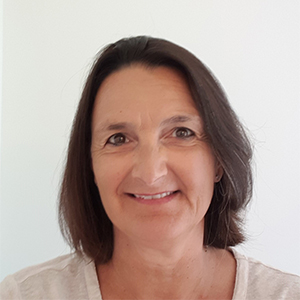
Christine Cardis (CGC’88) Anti-doping Manager at International Skating Union
What are your current activities?
I am responsible for the anti-doping department of the ISU (International Skating Union), the umbrella organization for ice skating. The role of my team is to manage the Anti-Doping program at a worldwide level. To do this, we work closely with the ISU Medical Commission and external experts. We set up international testing procedures for about 100 top athletes out of competitions and organize testing at about 50 ISU Events. We also liaise with the World Anti-Doping Agency to monitor the latest developments and ensure that the ISU’s Anti-Doping program complies with the World Anti-Doping Code and International Standards. We also run prevention programs to raise awareness of doping among athletes. Our role is not only to test, but also to educate.
What is your background?
I started the EPFL in architecture, then I reoriented myself to finally graduate in chemistry in 1988. I then traveled for more than a year before starting my professional activities at the Lausanne anti-doping laboratory which opened its doors at that time. I worked there until 2004, with a break of 6 months during which I integrated, as an international expert, the anti-doping laboratory of the Sydney 2000 Olympic and Paralympic Games. During my employment, I did a master in quality management and founded a family. Outside the world of Anti-Doping, I worked for 2 years at Firmenich in Geneva in the quality department and taught math and science in secondary schools in the canton of Vaud. For the last 10 years, I have been working at the ISU, where I started as the only anti-doping administrator. As this topic became more and more important, the group grew and I am now the manager. I also collaborate with the AISTS (International Academy of Sports Science and Technology) and the ISSUL (Institute of Sports Science of the University of Lausanne) which train the sports professionals and managers of tomorrow.
What were the highlights of your time at EPFL?
EPFL is a school that opens up a lot of possibilities. It is an extremely stimulating environment that offers great learning opportunities. There is also a whole range of extracurricular activities that allow you to develop other skills. As I was sailing a lot at the time, I was able to join the school’s regatta team and participate in the EPFL’s associative life as a member of the organization of the Lake Geneva Triathlon for students. These activities have contributed to the development of my organizational skills and have allowed me to build strong links and networks that are still active after all these years.
How did EPFL prepare you for your career?
It is thanks to my training as a chemist and my associative activities that I got my first job. My professional knowledge, the theoretical, analytical and practical bases acquired during my studies allowed me to participate in the implementation of the methods and procedures of the laboratory. I then moved on to management responsibilities for which the knowledge gained through my associative activities was very useful. The richness of the EPFL training allows to acquire the necessary knowledge to develop structured and analytical approaches while having a good understanding of the field thanks to the practical work and applied projects.
What are the links between the activities of a sports federation and technological developments?
As an international federation, we collaborate on research projects and implement the results of research conducted by multiple and varied organizations. My training as an engineer is very useful in these exchanges because it allows me to dialogue as an equal and to encourage the implementation of new procedures in the field, as well as to create bridges between the different actors in the fight against doping.
How do you see these interactions evolving and how do you see these two worlds coming together?
There are many issues that we need to work on as a federation that would benefit from a closer relationship with EPFL, and academia more generally. Beyond my department, there are, for example, questions about equipment to protect short track athletes in case of a fall. Work is underway to develop helmets and protection along the track. There is also a whole field of activity related to the use of new technologies for the promotion of this sport through the enrichment of videos with performance data or the realization of specific contents corresponding to the expectations of social network users.
Interview date: July 2021
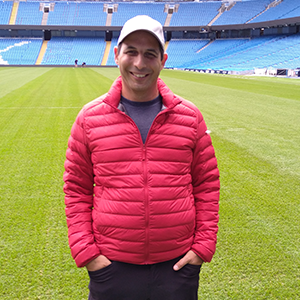
Horesh Ben Shitrit (IC’14) VP of Computer Vision Products, Second Spectrum
What is your current position/activity?
I am the Vice President of Computer Vision products at Second Spectrum, which was recently bought by Genius Sports. At Second Spectrum, we analyze video footage to provide the official performance data of the players in team sports. We are working with the top leagues in the world such as the NBA and the English Premier League. We are also working directly with the sports teams, analyzing video footage and providing statistical information on how the team is playing and how they can prepare for matches against other teams. In addition, we work with broadcasters such as ESPN and BT Sports, providing video augmentation to enhance the experience of TV viewers and crowds at events by providing additional information on top of the broadcast feed, allowing viewers to interact with the broadcast. For example, recently we had a cool project with Marvel, taking the Marvel Comics theme and converting a full NBA basketball game. For football, for the first time, we added a mini-map of the players’ locations as well as the ball while showing the live game.
What is your background?
Following a bachelor’s and master’s in electrical engineering, I switched to computer science and completed my Ph.D. at EPFL. My Ph.D. was in the computer vision domain, specifically about tracking multiple people from multiple cameras. We had several interesting projects including; tracking passengers in airports with Honeywell, tracking medical staff in a hospital in Munich, and tracking customers in shops, but the highlight for me, was tracking players in sports games. We had an Innosuisse project with the International Basketball Federation (FIBA) from 2010 to 2012, generating 20 terabytes of data, and the outcome of the project was basically the basis for my first startup: PlayfulVision, which later merged with Second Spectrum.
How has EPFL prepared you for your career?
I think that EPFL is a great place for entrepreneurs. During my Ph.D. at the Computer Vision Lab, directed by prof. Pascal Fua, other startups were created at the same time. We had enjoyed great technology and environment, where we could suggest projects and just try them out. I do not think that many Ph.D. students utilize this resource, but it is possible to mentor Masters or Bachelor students in semester projects and then see what is working out and what does not. Towards the end of my Ph.D. studies period, I also received an innovation grant directed by a business coach, courses on how to create start-ups, as well as, training and lab space – all of these resources help you start and grow.
What would you consider your biggest achievement in the field of sports?
The sport domain is one of the best for start-ups, as there are almost no constraints, and in addition, there are all kinds of potential customers, from amateurs and semi-profession to top leagues. This allowed the company to bootstrap and scale up. We started by demonstrating our technology with the Lausanne University Volleyball Club (LUC Volleyball) and the support of the sports center of UNIL/EPFL (CSS), one demo led to another, and the next thing we knew, we were at the FIVB Volleyball World Championships. I am proud that our technology is now used by the top leagues in the world, specifically the NBA and the English Premier League. and it all started with local teams around Lausanne. Moreover, I really like the fact that sport keeps you healthy – physically and mentally, and if our technology can help to inspire people to do more sport because we bring their heroes closer to them, that makes me happy.
Interview date: October 2021
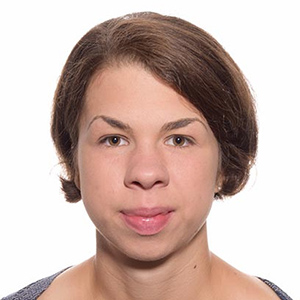
Evelin Boros, Materials Engineer at Scott Sports SA
The last year and a half you worked at EPFL as engineer. Could you tell us what attracted you for this position?
I studied chemical engineering in Hungary and Denmark with a specialization in polymer. Following my studies, I had a first employment at LEGO. As a sport fan, I always wanted to find opportunities to couple my hobby and my professional activity. I therefore made postgraduate studies in France related to the sport industry and this allowed me to couple my knowledge in material science with sport specific needs. Following these studies, I was looking for a position, where I could work on the development of a product, in collaboration with the industry, but keeping the research aspects of my work. I found at EPFL one position that was perfectly matching my interest.
What was your activity in the LPAC laboratory?
I worked on an InnoSuisse project for the development of an innovative product. This project was made in collaboration with a Swiss sports company and other laboratories from EPFL. I was responsible for research activities on the material side and my role was to find the right type of composite to reach the needed properties. This was highly motivating as it allowed me to combine my prior knowledge, my curiosity and my passion for sports. Having the opportunity to research a topic that will end in an innovative solution for active customers was also a drive for me.
What opportunities did this project open for you?
From a professional point of view, I could further develop my knowledge on composite materials. Being among highly skilled colleagues, collaborating with people with different backgrounds taught me numerous new aspects of my research field.
Working in a laboratory with numerous activities and many different industrial partners also allowed me to widen my professional network and see industry needs and trends. That is how I got involved in a side project in collaboration with SCOTT Sports which allowed me to make a job transition to SCOTT.
What are your current activities at SCOTT? And what motivated you to move from academia to industry?
I am part of the SCOTT Research, Innovation and Compliance Department as a Materials Engineer. I work partly on toxicology aspects, making sure that we comply with the applicable regulations and that our products are not harmful to humans nor to the environment. The other part of my job consists of participating in innovation projects, as material expert, to find new, cutting-edge solutions for our customers.
Even in academia, I was always seeking to work in collaboration with companies, so it has always been important for me to work on tangible products. But I was concerned to lose the research and scientific aspect of my daily job if I moved to industry. This opportunity at SCOTT allows me to work on many products, and still be an expert in my field, challenging my knowledge, providing opportunity for self-development.
What is more I am a passionate cyclist, so working for a company where cycling is in the DNA of our activities, is a dream coming true.
How do you anticipate future collaboration with EPFL?
SCOTT is continuously looking for innovative ideas and is aware of the fact that highly reputed universities, such as EPFL, are filled with bright minds, whose collaboration would be much appreciated.
We are already in contact with several different departments at EPFL, and work with students, postgrads, and are discussing potential research topics. One academic partner such as EPFL can offer this kind of diversified expertise.
In the future we would like to continue this collaboration, for example by offering student projects and internships on innovative topics. This way we hope to obtain fresh ideas and the students can also benefit from working on very concrete problems, understanding the organizational and business aspects of industry partners, and developing products that they might use one day in the future.
Interview date: December 2021